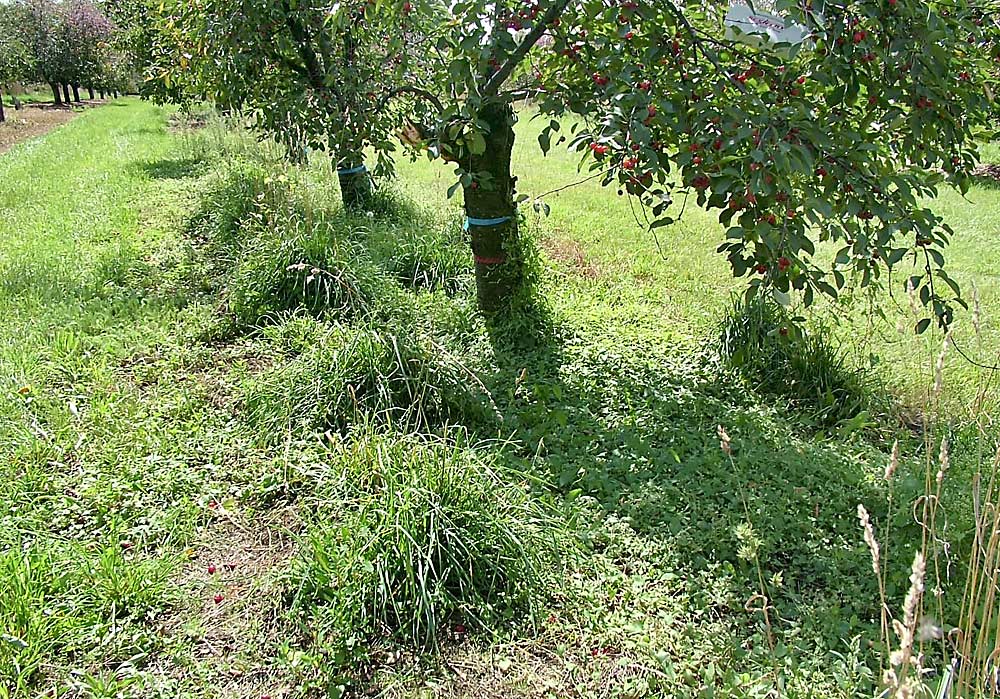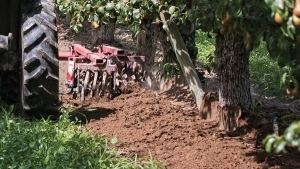
Growers need multiple methods of weed control, because even though herbicides are highly effective, their overuse leads to resistance, said Michigan State University assistant professor and weed scientist Erin Burns.
Burns, who normally works with row crops, discussed integrated weed management — a subset of integrated pest management that uses concerted tactics to control troublesome weeds — in fruit crops during the MSU Fruit School in February.
Controlling weeds in perennial fruit systems requires a somewhat different approach than in annual crops. Crop rotation is a major weed-fighting tool in row crops, for example, but such a wholesale soil-disrupting tactic can’t be performed nearly as often in orchards and vineyards that occupy a field for decades and where perennial weeds such as Canada thistle and bindweed are more likely to thrive.
Weeds not only fight for nutrients, but they serve as hosts for pathogens, insects, rodents and other crop pests. Weeds are good at traveling and reproducing, too. Soil can contain thousands of weed seeds per square foot. Some weed seeds live for decades, waiting until conditions are just right to emerge — “hedging their bets to make sure somebody lives,” Burns said. “They just want a handful to live to produce more seeds.”

Weed seeds travel via wind, water, animals, people — any number of ways. Irrigation and precipitation move them around. So do manure and compost applications. Weed seeds often enter a field from noncrop areas of the farm, including ditches and fencerows.
“Weed seeds are great hitchhikers,” she said. “There’s a million ways to get nasty weeds introduced.”
Burns encourages growers to think about weed control in terms of a “weed seed bank” in the field. The “money” is the number of seeds in the soil. Unlike normal bank accounts, the goal is to withdraw as much money as you can and make as few deposits as possible.
One way to make a withdrawal is to encourage weed seed germination — which at first might sound like a bad thing but can actually reduce the total. “If you can get seeds to germinate and control them, you’ve cut out a large portion of your seed bank,” she said.
One such method induces “fatal germination,” where certain types of tillage prompt weeds to germinate deep in the soil and die because they don’t get enough light, she said.
Another way to shrink your weed seed bank is to create more suitable habitats for the birds, insects and earthworms that eat them. Use cover crops and other tools to manage soil nutrient levels. The more healthful and biologically active your soil, the better.
“Weeds like to invade when things aren’t going well,” Burns said.
She also said to keep your field equipment clean.
“I can’t say enough about cleaning equipment and how far it goes in reducing the spread of weeds,” she said.
Burns stressed the importance of planning ahead, perhaps even creating a weed control calendar. Scout your fields for weed location and type. Familiarize yourself with the life cycles of your weeds and use the information to your advantage. When perennial weeds overwinter, for example, they put all their reserves into the ground. Removing their tops at that time is not as effective as removing them when they’re pushing nutrients upward to produce flowers and seeds.
When hitting weeds directly, target the big ones first.
“If you can get the largest 10 percent of individuals, you’ve reduced seed production by 90 percent,” she said.
When you do plant a new crop, start with a weed-free field — especially if the crop doesn’t have a lot of herbicide options.
“You don’t want to establish a new planting into a weedy mess,” Burns said.
Certain cultural practices can give fruit crops a competitive advantage over weeds. Tighter spacings and big canopies can overshadow small weeds and prevent them from getting enough sunlight, thus they produce fewer seeds. Fast-growing varieties can get a jump-start on weeds, too.
Physical and mechanical methods — including “good old hand weeding,” tillage and burning — disrupt weed seed germination and destroy plant tissue. And there are new control methods on the horizon, such as zapping weeds with electricity. Weed control and weed identification apps are available, too, but are still being refined, she said.
—by Matt Milkovich








Leave A Comment